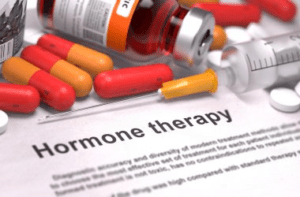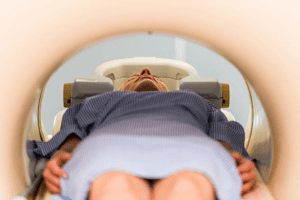Gynecomastia is a condition that involves the enlargement of male breast tissue. It affects a large portion of the male population, with estimates ranging from 50% to 65%.
Dr. Harikiran Chekuri, an established gynecomastia surgeon in Hyderabad, says:
“Hormonal imbalances, certain medications, or other underlying health issues can cause gynecomastia. Often referred to as “man boobs,” it can impact a man’s confidence and well-being. For many individuals, gynecomastia surgery is a common solution to address the issue. But, there is a growing awareness and interest in non surgical alternatives. These minimally invasive approaches offer hope to those seeking non-surgical treatments.”
This blog aims to provide comprehensive information on non surgical gynecomastia treatment. We strive to empower our readers to make informed decisions about their health and well-being.
Do you wish to explore non surgical ways to reduce gynecomastia? Please consult a qualified medical professional for guidance.
Next, we look at standard options for gyno reduction without surgery.
Types of Non Surgical Gynecomastia Treatments
Non surgical approaches target the underlying causes of gynecomastia to improve chest contours. Here are some of the ways for gynecomastia reduction without surgery:
 Hormone Therapy (HT)
Hormone Therapy (HT)
“Hormonal imbalances are a common cause of gynecomastia,” explains renowned plastic surgeon Dr. Harikiran Chekuri. “HT aims to correct these imbalances, particularly when there’s an excess of estrogen or a testosterone deficiency.”
Hormone therapy involves using anti-estrogens and aromatase inhibitors which help reduce the estrogen levels.
Medications
Medications like Selective Estrogen Receptor Modulators (SERMs) and testosterone replacement therapy can help reduce breast size in men.
Low-Level Laser Therapy (LLLT)
LLLT, or Cold laser therapy, involves using laser pads on the chest to target fat cells. The laser energy penetrates the skin and breaks down fat cells, which the body then metabolizes.
Ultrasound Treatment
Ultrasound waves are applied to the chest to break down fat cells, which the body eventually eliminates.
 Radiofrequency Therapy
Radiofrequency Therapy
RF therapy uses a device that emits radiofrequency waves to the chest area. The heat energy breaks down fat cells and stimulates collagen production, leading to tighter, firmer skin.
Lifestyle Changes
Lifestyle changes include following a nutritional diet and avoiding triggers like anabolic steroids, marijuana, and certain prescription medications that are known to cause gynecomastia.
Focused exercise
Cardio exercises (running, swimming, and cycling) and strength training (push-ups, bench presses) can help burn body fat, and aid in toning the chest muscles.
Understanding the pros and cons of any procedure helps us make informed decisions. The following section provides essential information you need to weigh your options effectively.
Benefits And Drawbacks Of Non Surgical Cure For Gynecomastia
Dr. Harikiran Chekuri, a certified gynecomastia surgeon in Hyderabad, highlights the need to be well-informed about non surgical gynecomastia treatments. Here’s a comprehensive overview:
Benefits
- Non surgical gynecomastia treatments are less invasive, reducing the risk of infections and complications.
- Patients recover and resume their normal activities sooner compared to surgical options.
- They are more accessible for individuals looking to manage gynecomastia without significant financial strain.
- The side effects are generally milder with no anesthesia or surgical trauma.
- Doctors can provide these treatments in their offices for more convenience.
- Non surgical treatments can result in gradual and natural-looking results.
- Many non surgical options target the root cause of gynecomastia, ensuring a more effective and personalized treatment plan.
Drawbacks
- Non surgical treatments may not be as effective for everyone. Results vary based on the severity of the condition and individual response to treatment.
- Gyno reduction without surgery may require multiple sessions to achieve the desired results. This can be time-consuming and require a commitment.
- Gynecomastia reduction without surgery may be less effective for severe cases of gynecomastia.
- While generally mild, non surgical treatments can still have side effects. Depending on the treatment used, these may include skin irritation, redness, swelling, or hormonal imbalances
- .The delayed results may frustrate some individuals. Patients need to have realistic expectations about the timeline for results.
- Though individually less expensive, the cost of multiple sessions can add up. Over time, this might become comparable to the surgery cost, especially if maintenance treatments are needed.
Eligibility Criteria
Determining who is eligible for non surgical gynecomastia treatments includes factors like:
- the severity of gynecomastia
- overall health status
- treatment goals
Please consult a qualified healthcare provider to evaluate eligibility and develop a personalized treatment plan.
Let’s understand the mechanisms behind non surgical treatments.
What To Expect From Non Surgical Gynecomastia Treatments?
Understanding the realistic outcomes is crucial for achieving satisfactory results.
Recovery
As mentioned earlier, recovery from non surgical gynecomastia treatments is quicker and less invasive compared to surgical interventions.
Post-op guidelines for a smoother recovery

- Schedule and attend all follow-up visits with your doctor to monitor progress and address concerns.
- Wear recommended compression garments to help reduce swelling and support chest contouring.
- Avoid strenuous activities and heavy lifting for a few days to a week to ensure proper healing.
- Stay hydrated and maintain a balanced diet to support your body’s recovery process.
- Take prescribed medications, such as pain relievers or anti-inflammatory drugs.
- Report unusual side effects and symptoms to your healthcare provider immediately.
- Follow your doctor’s advice on caring for your skin, like gently cleaning and moisturizing the treated area.
- Avoid alcohol and smoking, as they can impede the healing process.
- Gradually resume normal activities as your doctor advises while listening to your body’s signals.
Results & Improvements
Results may take time to become fully apparent and vary from person to person. It’s important to maintain realistic expectations throughout the healing process. The extent of improvement may vary depending on individual factors such as the severity of gynecomastia and overall health.
Side Effects
- Redness, itching, or rash may occur at the treatment site.
- Temporary swelling in the treated area is normal.
- You may experience mild pain or discomfort during or after the treatment.
- Some patients may develop bruises around the treated area.
- Hormone therapies can sometimes lead to hormonal fluctuations or imbalances.
- Certain medications used in treatment may cause nausea.
- Feeling tired or fatigued can be a side effect of some treatments.
- Rarely, patients might experience allergic reactions to medications or topical treatments.
- Numbness or tingling in the treated area can occur but is usually temporary.
Want to know how effective non-surgical gynecomastia treatments can be? Let’s explore the outcomes and relapse rates of these treatments.
Success & Relapse Rates of Non surgical Gynecomastia Treatment
Non surgical gyno treatments can provide significant improvement in chest appearance. However, the results may be temporary. While some patients experience substantial improvements in chest contour and reduction of breast tissue, others may see more modest results.
Additionally, the likelihood of relapse or recurrence of gynecomastia also varies. Certain factors can influence the long-term success of non-surgical interventions. These include hormonal imbalances, lifestyle changes, and ongoing treatment adherence.
Please discuss your expectations and concerns with a qualified gynecomastia specialist. They can help determine the most suitable treatment plan for your needs.
Curious about insurance coverage for non-surgical gynecomastia treatments? Let’s bridge into the next section to explore this important topic.
Does Insurance Cover Non Surgical Gynecomastia Treatment?
Coverage may vary depending on insurance providers and policy terms. Please check with your insurance provider to understand your coverage options. Some treatments may be eligible for reimbursement if they are deemed medically necessary. Always verify the specifics of your policy to avoid unexpected costs.
Conclusion
Non surgical gynecomastia treatments offer a range of options for people seeking noninvasive treatments. From hormone therapy and medications to lifestyle changes and advanced therapies like cold laser and ultrasound, these treatments provide effective alternatives.
Dr. Chekuri strictly advises a thorough consultation to determine the best course of action for you. Understanding the benefits and risks of each treatment is crucial for making an informed decision.
Do you have more questions? The FAQ section offers insights on nonsurgical gynecomastia treatments.
FAQs
What are the most effective non surgical gynecomastia treatments available?
The most effective non surgical treatments include hormone therapy, ultrasound, and cold laser. Please discuss the suitability and possible side effects with your health provider to make informed decisions.
Are Non surgical gynecomastia treatments safe?
Non surgical gynecomastia treatments are generally safe when administered by a qualified healthcare provider. While these treatments have fewer risks than surgery, it’s essential to monitor side effects and follow medical guidance closely.
How long does it take to see results from non surgical treatments?
The timeline for non surgical gynecomastia treatments depends on the treatment method and individual response. Patients may notice improvements within a few weeks to several months. Adherence to the treatment plan is critical to achieving the best outcomes.
Are non surgical gynecomastia treatments permanent?
Non-surgical gynecomastia treatments may provide long-lasting results, but their permanence can vary among individuals. It’s essential for individuals considering non-surgical options to discuss the potential longevity of results with a qualified healthcare provider.
Are there any side effects associated with non surgical treatments for gynecomastia?
Some non surgical treatments may have side effects like skin irritation, vision disturbances, and fertility issues. Please consult a healthcare professional for a personalized assessment.
What should I consider before choosing a non surgical treatment for gynecomastia?
Consider the potential benefits and side effects of each treatment. Non surgical options can be effective, particularly in mild or moderate cases. However, discussing your specific condition, lifestyle, and treatment expectations with a specialized doctor is essential to making an informed decision.


Recent Comments